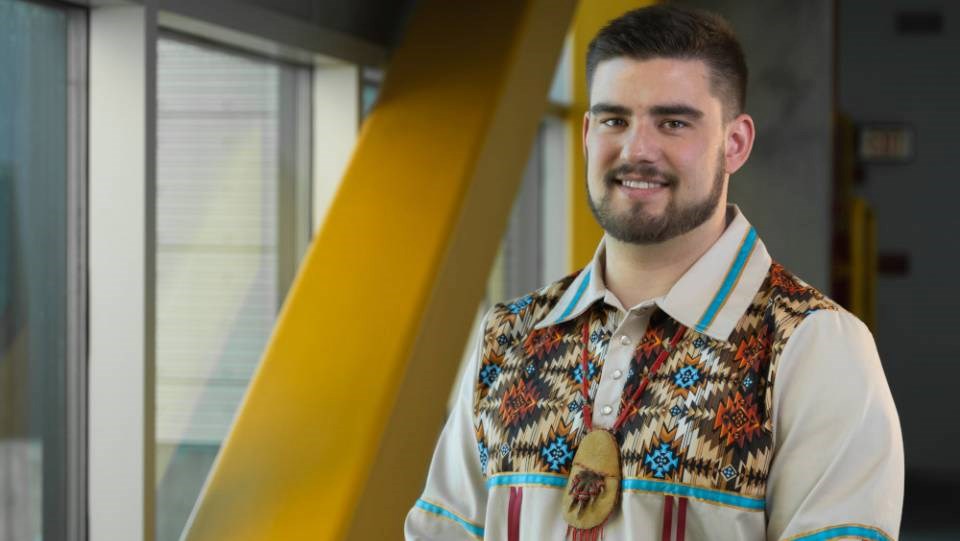Researchers at Lakehead University are helping to develop a new modular housing solution that could address challenges faced by remote Indigenous communities.
Led by Ahmed Elshaer, an associate professor in civil engineering, the team is exploring solutions that would be affordable and sustainable, and that would stand up to the harsh cold and windy climates of remote regions.
“Currently, we recognize that there is an extreme shortage in Indigenous housing,” Elshaer said. “Either it’s a shortage or a huge need for repairs.”
Homes in remote Indigenous communities are often beset by overcrowding, he said, which can lead to mould, creating unsafe living conditions and threatening the structural integrity of the building.
Constructing new homes is complicated by the remote nature of the communities. Building materials and equipment have to be trucked up seasonal ice roads at increased cost, and builders have a short construction season in which to complete the work.
Plenty of modular housing systems already exist, but they aren’t robust enough to stand up to the vibration incurred during transportation, or the harsh climates of far northern regions, Elshaer said.
“So we need something that is really tailored for the conditions that we have in Indigenous communities so that it can withstand those difficult conditions,” he said.
Each member of Elshaer’s research team is taking on a different facet of the research.
Want more business news from the North? Subscribe to our newsletter.
One student is working on developing special connections between beams and columns so that they don’t require any lateral support. A second is working on boosting a home’s thermal insulation. Instead of using regular modular panels, Elshaer said, the project panels could use industry waste from the forest sector to guard against the extreme cold.
A third team member, PhD civil engineering student Tristen Brown, is working to make the system cost-effective while remaining code-compliant and suitable for resisting climate impact. He’s also gleaning feedback from Indigenous stakeholders to better understand their housing needs.
For his efforts, Brown has been awarded a prestigious Vanier Scholarship, the top PhD award available in Canada. It comes with a $150,000 prize — that’s $50,000 per year over three years — which Brown said will keep him financially stable while he conducts his research.
A member of the Sturgeon Lake Cree Nation in Alberta, Brown began his educational journey at Lethbridge College before switching to Lakehead under the school’s transfer program. After completing his undergraduate degree, he earned his master’s degree, specializing in how wind impacts tall structures.
Getting invited to work on the current project with Elshaer was exciting, Brown said, as he’s familiar with the poor housing conditions on many First Nations, and this provides an opportunity to help make improvements.
“Seeing those problems firsthand, I knew that if I produced this research on my own… we could make an instant impact within a few years of conducting this research,” Brown said.
The research is in its early stages, but Elshaer said he envisions their solution as lightweight enough that it could be carried by a single person.
Components could be colour- or number-coded and pieced together with a basic torque wrench — similar to putting together furniture from IKEA.
“So you don’t need an engineer to supervise the work,” Elshaer said. “You can just assemble them.”
Unlike conventional housing, the team’s modular solution will be designed to be disassembled and reused, either to move the home to another location, or to repurpose it into a different structure.
This may be useful in remote regions where it can be hard to sell a home, which can lead to structures being abandoned, he added.
“You can just disassemble it and make use of the many pieces of your house and construct it elsewhere, so it is retaining its value even while re-siting," Elshaer said.
Elshaer and his team aren’t homebuilders, and they aren’t about to launch a side business in residential construction.
But they do plan to share the results of their research with builders who can then use that information in their own practices.
Elshaer anticipates it will be about two years before they have a working prototype that can be tested in the field. At that point, he said, developers, architects and others in the construction industry will be more than welcome to take their work and build on it.
“We are not like a business that we are looking for exclusivity — no, we are actually looking to help and provide all the required information to all the parties, and at the end of the day, we are looking for solutions… so this is actually one of the beautiful things about research,” he said. “We are very proud of what we are doing.”




